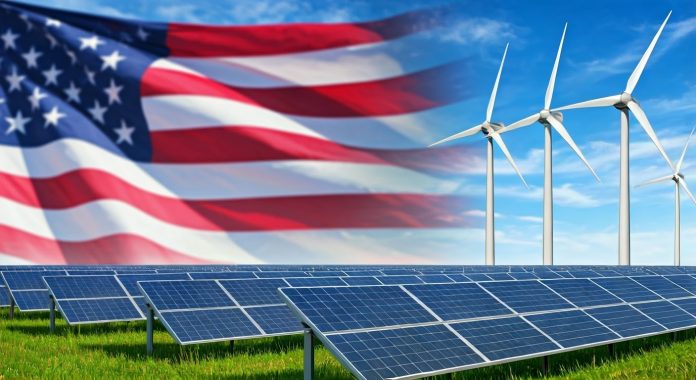A groundbreaking study offers a comprehensive roadmap for eliminating greenhouse gas emissions from the US energy system by 2050.
This research provides a range of cost-effective options, equipping policymakers and industry leaders with the insights needed to tackle climate change effectively. The study shows that decarbonisation can be achieved through various technologies, each playing a crucial role in reshaping the nation’s energy system landscape.
Multiple paths to decarbonisation
“There isn’t just one way to cost-effectively decarbonise our energy system,” said Jeremiah Johnson, co-author of the study and a professor at North Carolina State University (NC State). “In fact, we have many technologies to choose from. Our study helps people understand exactly what those options are and how to prioritise them.”
The study focuses on developing pathways to decarbonise the US energy system, which spans electric power generation, transportation, and industrial sectors.
Aditya Sinha, the study’s lead author and research scholar at NC State, emphasised the complexity of finding the ideal route.
“There are a range of models out there that are designed to find the least expensive path forward to decarbonise our energy system – essentially identifying the optimal approach to eliminating greenhouse gas production in everything from electric power production to transportation and industry,” Sinha explained.
Overcoming modelling challenges
The models used in this study aim to predict the most cost-effective solutions for reducing carbon emissions, but they often struggle to account for uncertainties across different sectors.
With an extensive range of technologies available, the challenge lies in determining how flexible these models can be without compromising efficiency.
“One way to address this challenge is to stop trying to find the ‘perfect’ solution,” said Sinha. “Instead, we can identify alternative options that get us very close to the least expensive path forward.”
The researchers defined ‘very close’ as within 1% of the optimal cost for decarbonising the entire US energy system.
A new approach to energy modelling
To explore these alternatives, the research team used an advanced modelling tool known as Temoa. This tool was designed to determine the least costly path to decarbonisation, but the team modified it to account for slight variations in cost.
By adding 1% to the optimal cost and running the model 1,100 times, they tested various configurations, adjusting the inclusion or exclusion of different technologies.
The goal was to explore how different technologies could be adopted or sidelined while remaining within budget constraints.
Key findings: Four categories of technologies
The findings reveal four distinct categories of technologies that offer different levels of potential in decarbonising the US energy system:
- Broadly adopted technologies: Solar and wind energy expansion, alongside increased energy storage capacity, were consistently selected in all scenarios. These technologies were central to achieving cost-effective decarbonisation and will play a leading role in transforming the energy landscape.
- Phasing out or minimising technologies: The model identified sectors that would see significant reductions or eliminations, including petroleum in transportation and coal power plants that lack carbon capture technologies. This category highlights the need for a planned transition away from these energy sources.
- Emerging technologies with varied use: Some technologies, such as direct air capture and hydrogen use in transportation and industry, appeared in some scenarios but not others. These technologies hold promise but require further research and development to determine their scalability and potential impact.
- Occasionally used technologies: Technologies such as synthetic fuels from carbon dioxide or coal plants with carbon capture were seldom used, but when included, they played a critical role in certain scenarios. More research is needed to evaluate their viability.
Strategic prioritisation
The study offers practical guidance for policymakers: “First, we need to figure out how to facilitate the more widespread adoption of the technologies in Category 1,” said Johnson.
“Second, we need to figure out how to plan for an orderly and just – but timely – transition away from the technologies in Category 2.
“Third, we won’t need all of the technologies in Category 3, but we’ll need some of them. That means we need to invest in research and development to determine which technologies we should prioritise and how to deploy them.
“Lastly, we also need to invest in research and development to determine if any of the technologies in Category 4 are truly worthwhile and, if so, how to capitalise on those technologies.”
The study’s findings provide essential insight into the pathways that can decarbonise the US energy system by 2050.
By laying out multiple options, it offers flexibility in addressing the complexities of climate change. Through strategic investment, research, and a clear focus on key technologies, the United States has a roadmap to a cleaner, more sustainable energy future.









